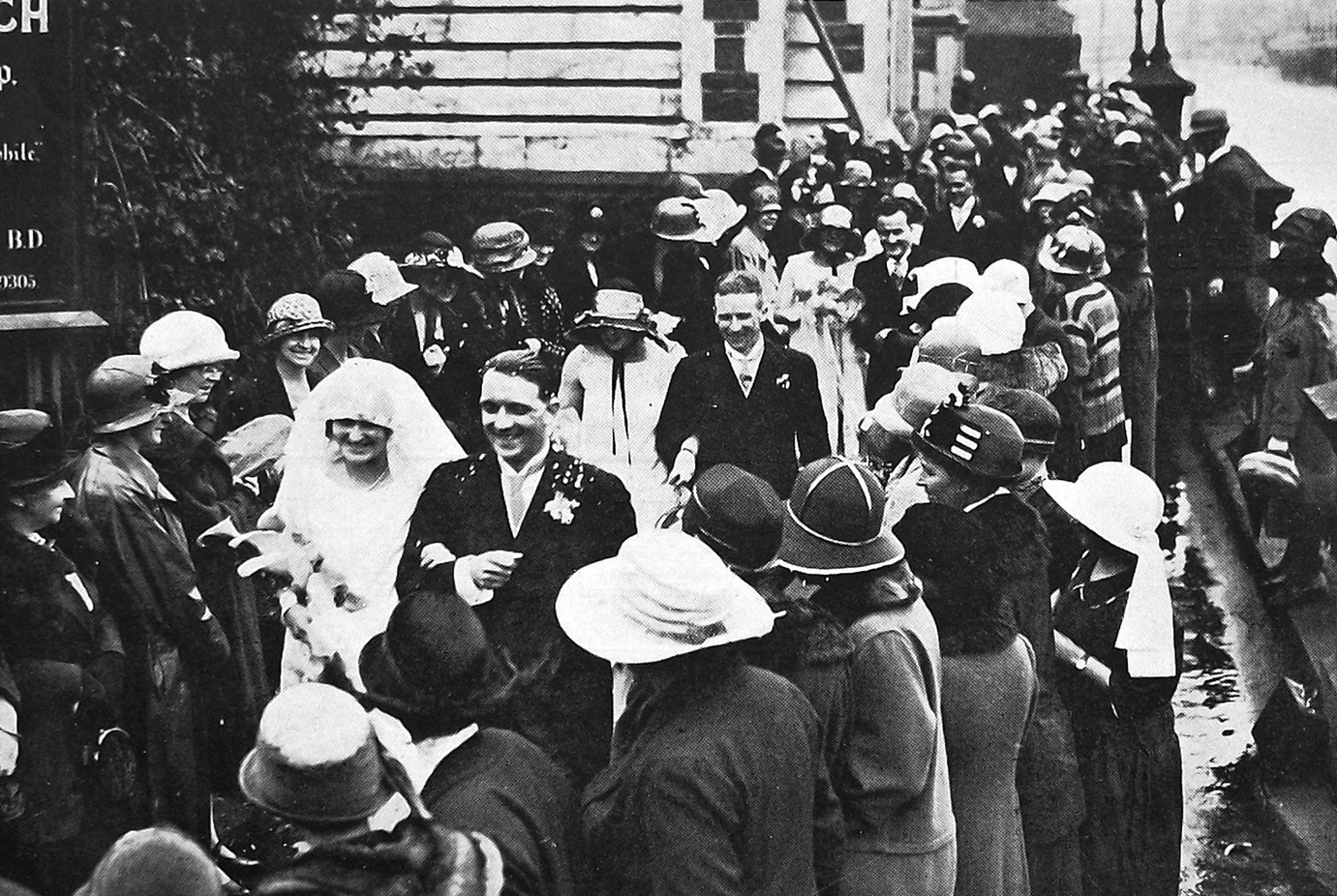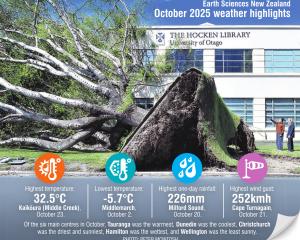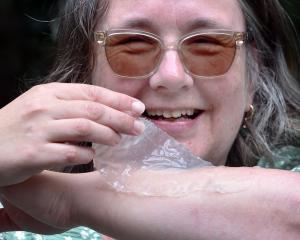On Wednesday afternoon, at Knox Church, Kathleen Margaret, daughter of the late Mr J.R. Glendining and Mrs Glendining, was married to Norman, son of Mr and Mrs A. Brett, of Epsom, Auckland. The Rev Tulloch Yuille was the clergyman, and Mr Paget Gale the organist, while, during the ceremony, Mrs Evans sang suitable wedding hymns. Masses of wisteria and arum lilies were used as decorations. The bride was given away by her uncle, Mr F.W. Mitchell, and looked very stately and beautiful in her gown of cream satin simply cut on classical lines and adorned with heavy motifs of silver satin. Her train was of cream satin and georgette, and her veil (lent by the bridegroom’s mother), of rich Brussels lace caught on the left shoulder with a knot of orange blossom. With her sheaf of arum lilies tied with pink tulle, she formed a queenly contrast to her three bridesmaids, Misses Mary Glendining, Esme a’Court (Christchurch) and Billie Mitchell, in their simple frocks of Princess Mary-blue georgette, quaintly adorned with velvet flowers in a deeper tone. They wore hats of black crinoline straw trimmed with posies of red roses, and carried bouquets of red roses veiled in pink tulle. Messrs Stanley Riddler (Wellington), Selwyn Robinson (Auckland) and Charles Reid were groomsmen. The wedding breakfast was served at the home of the bride’s mother at Littlebourne. The bridal couple stood under a bell of white lilac lined with pale pink to receive the congratulations of the guests. Mrs Glendining, the hostess, looked handsome in a model gown of beige satin with panels of white lace finished with long tassels. Her hat was of black satin trimmed in bird-of-paradise plumes, and her bouquet was of red roses. She was escorted by her son, Mr Ian Glendining. The bride’s grandmother, Mrs A. Johnston, wore black satin, and carried a posy of purple pansies. Mrs Brett, the bridegroom’s mother, was in navy blue georgette over fuchsia satin, with a hat of navy blue ospreys. Her bouquet was also of red roses. After the reception the newly-wedded pair left on their honeymoon, the bride’s travelling outfit being a French model frock of handmade beige georgette with a wrap to march, and a smart hat of black satin with an upturned brim and a band of ospreys surmounting the crown.
Rutherford visits university
Members of the University Council and the professorial staff, graduates and undergraduates, and leading citizens, gathered in the Allen Hall last night to welcome Sir Ernest Rutherford, the famous scientist, to Dunedin. Sir Ernest could not but have been pleased at the warmth of the reception accorded him. Sir Ernest Rutherford was very pleased to find his old friend Professor Jack here. Professor Jack had spent some time in his laboratory in Manchester some years ago, and he had done good work in Dunedin. (Applause.) The study of science grew so rapidly that it was impossible for any one man to read more than say 10 percent of the literature on the subject, and so he could only learn what was going on by getting word of mouth knowledge from the others working with him. It was the only way they could keep their head above water, and how Professor Jack was not submerged he could not understand. (Laughter.) Teaching staffs should have opportunities of going abroad at reasonable intervals. The problems of the education of their young people were of the utmost importance in a young country. — ODT, 6.11.1925
Compiled by Peter Dowden













